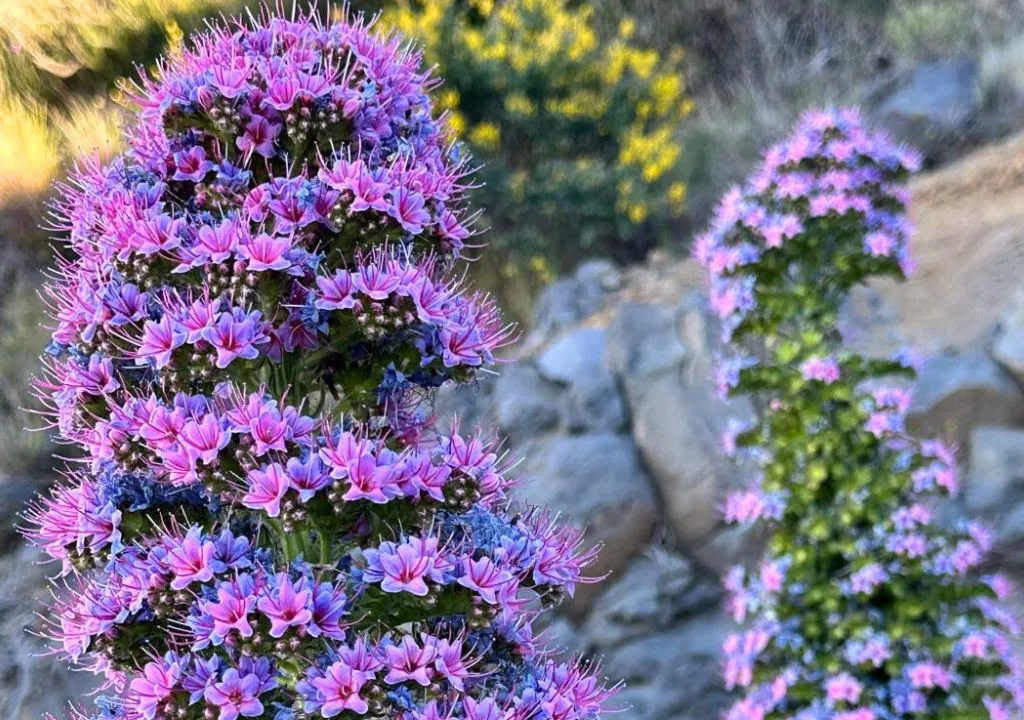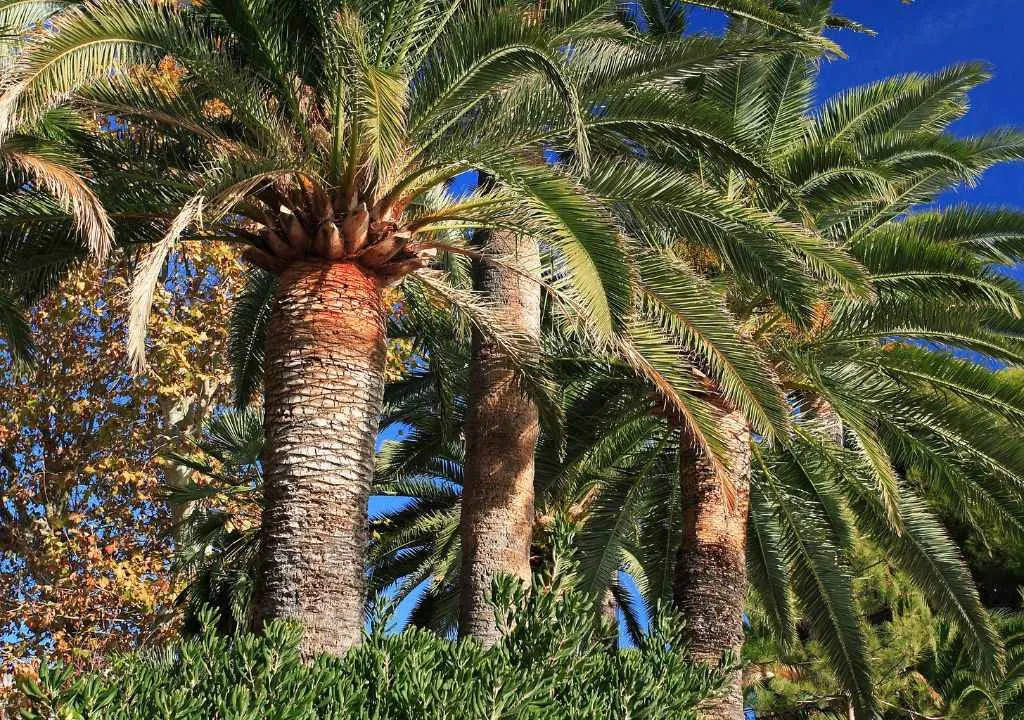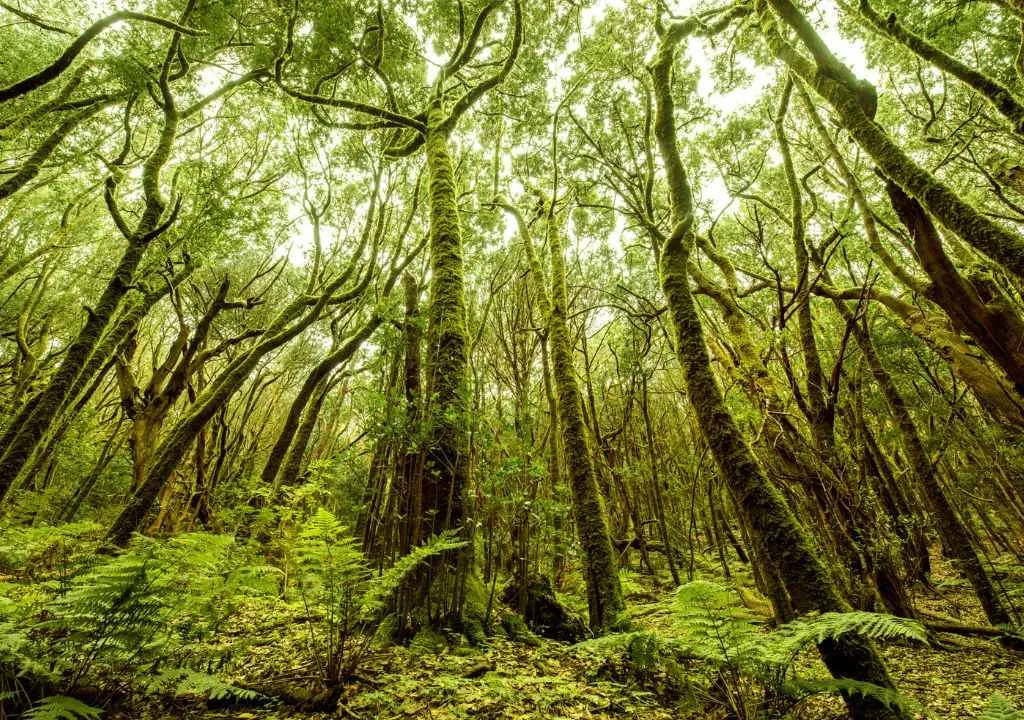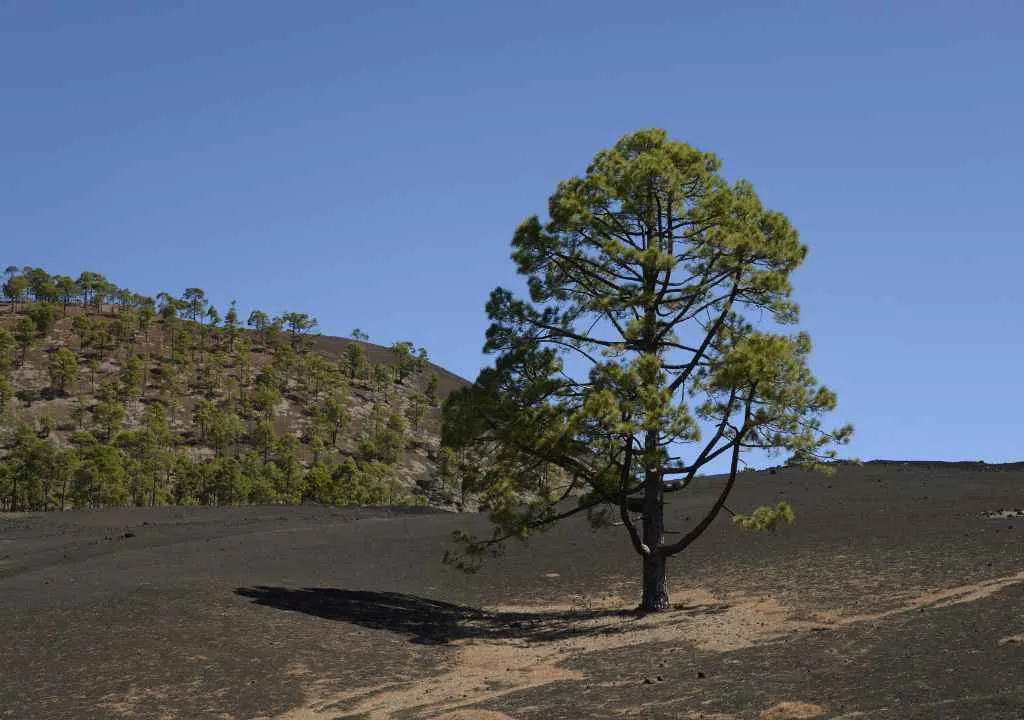The Tabaiba dulce, known scientifically as Euphorbia balsamifera, is a hardy succulent shrub that colors the coasts of the Canary Islands with its strong and elegant presence.
Although it is not endemic to La Palma, since it also grows in northwest Africa, it is an essential part of the island’s coastal landscape, especially in the low-lying, sunlit areas near the sea.
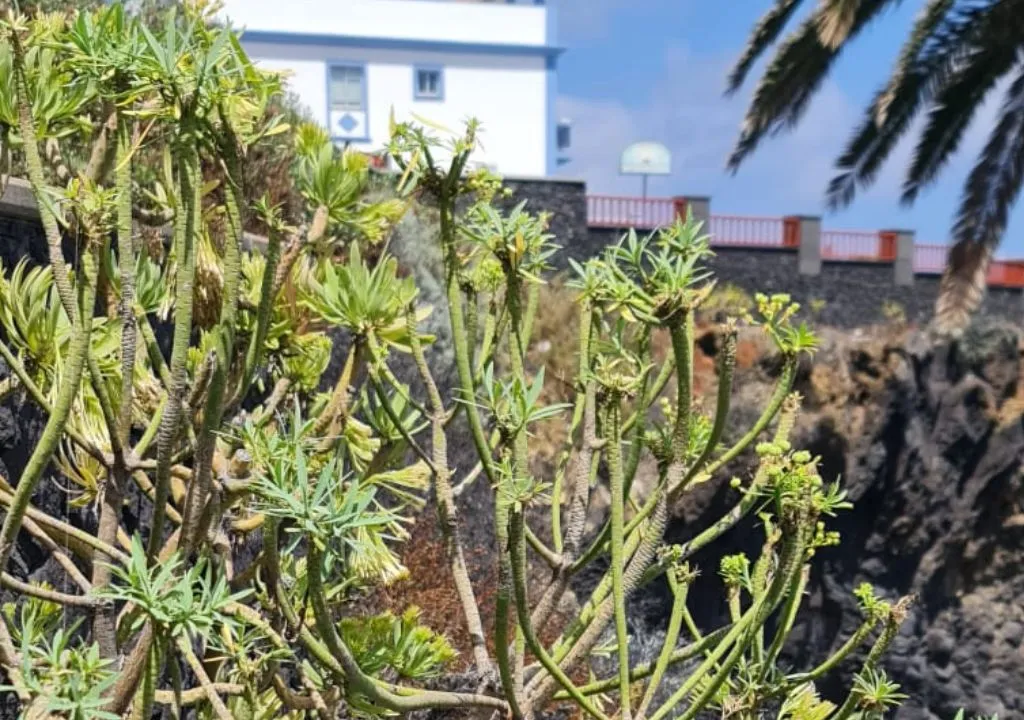
Facts
| Detail | Key Information |
|---|---|
| Common / Scientific Name | Tabaiba dulce Aiton — Euphorbia balsamifera Aiton |
| Description | Succulent shrub, highly branched from the base, with greyish stems and rosettes of leaves at the tips. |
| Flowering Period | From autumn to winter, approximately October to May. |
| Where to See It | Coastal areas, rocky slopes, lava fields (malpaíses), and sea cliffs. |
Adaptation to the Coastal Environment
The sweet spurge thrives in extreme conditions, poor soils, high salinity, and strong coastal winds.
Its shallow root system allows it to absorb surface moisture, while its mild latex, less caustic than that of other euphorbias, provides resistance to saline stress.
Flowering and Reproduction
Its small, yellowish-green flowers appear singly at the ends of branches.
When the capsule matures, it splits into three parts, releasing light seeds that are carried away by the wind.
Distribution and Ecology: dulce en La Palma
- Although not exclusive to La Palma, Euphorbia balsamifera is native to the Canary Islands and northwest Africa.
- On La Palma, it grows mainly along the coastal slopes exposed to sea winds, forming part of the tabaibal scrub, one of the most characteristic ecosystems of the island’s lower altitudinal zone.
- These plant communities protect the soil from erosion and act as a natural barrier against sea salt.
- They often coexist with Cardon (Euphorbia canariensis) and other coastal plants.
- Under favorable conditions, the sweet spurge can reach up to three meters in height.
Traditional Uses
The people of La Palma have long used the sweet tabaiba for practical and medicinal purposes:
- Its mild latex, when dried in the sun, produced a gum-like substance once used to strengthen gums.
- It served as a natural glue or sealant, used to caulk barrels and containers thanks to its resin-like texture.
- In traditional medicine, it was believed to have emollient properties for treating warts or calluses, though caution was always advised due to its latex content.

